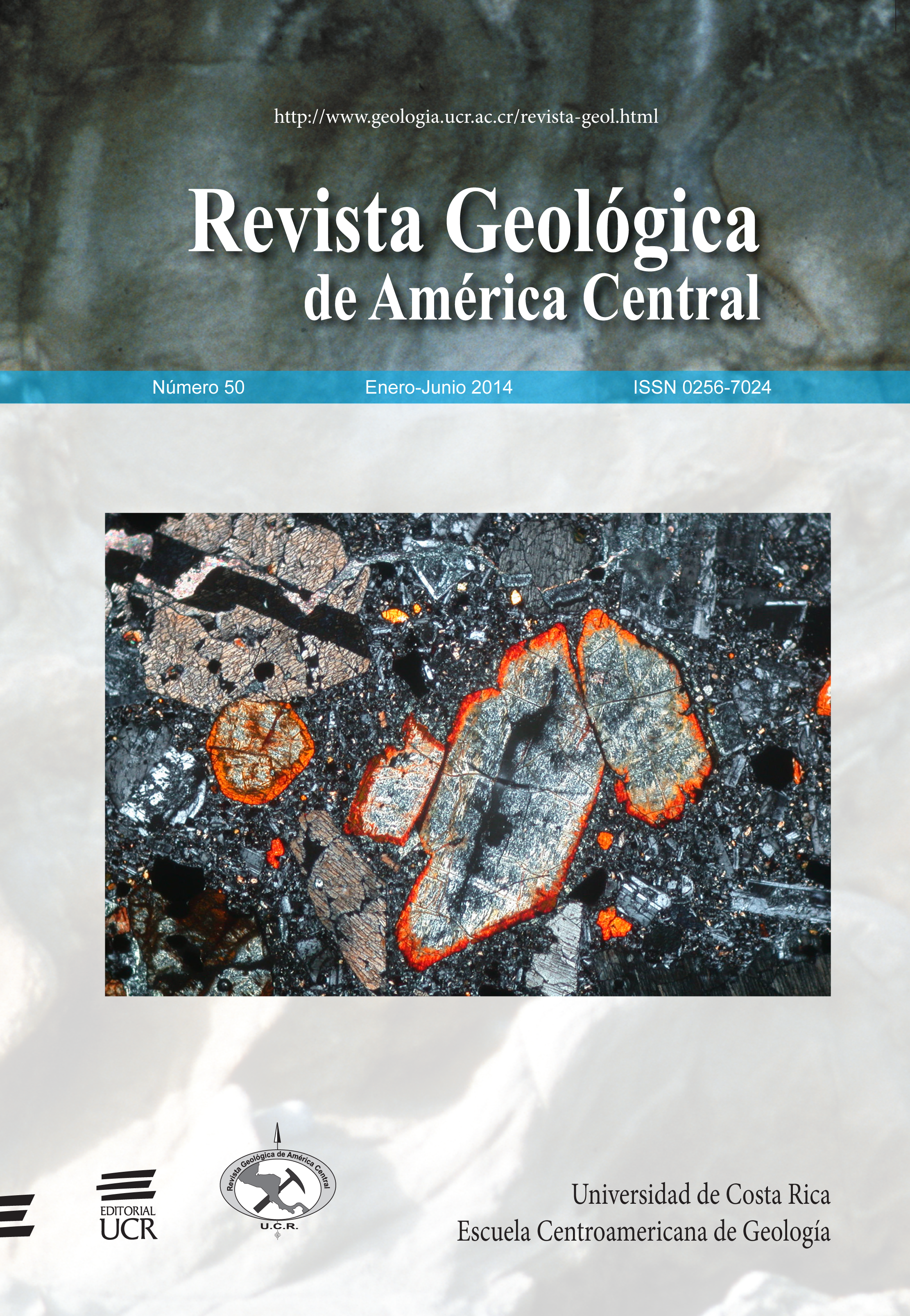Abstract
In the first part of the paper, the most important seismological aspects of Central America were reviewed. The predominant soil types and their origin were also studied. A description of the data used in aspects such as information sources, ranges of magnitude, hypocentral and epicentral distance, and earthquake classification according to their origin is presented. A procedure of soil classification for all sites is considered, based on the average spectral ratios obtained at each station, as well as in the geological maps and lithological descriptions. Attenuation equations are obtained for crustal earthquakes using data from Central America and for subduction earthquakes using records from Costa Rica.The functional form used is linear, taking the geometric mean of peak acceleration (GM PGA) or the geometric mean of the pseudo spectral acceleration (GM PSA) obtained from the response spectra for 5% of damping, as the dependent variable. The moment magnitude, hypocentral distance, and soil type were used as independent variables. In the case of GM PSA, a total of 22 frequencies were considered. The results are compared with models proposed by other authors. In general it is observed that values obtained in this paper are lower. The response spectras were also compared with those proposed by the Seismic Code of Costa Rica. For all cases, the selected inversion method is the least-squares one step because it showed the highest stability of the results.
##plugins.facebook.comentarios##

This work is licensed under a Creative Commons Attribution-NonCommercial-ShareAlike 3.0 Unported License.
Copyright (c) 2014 Revista Geológica de América Central
Downloads
Download data is not yet available.






